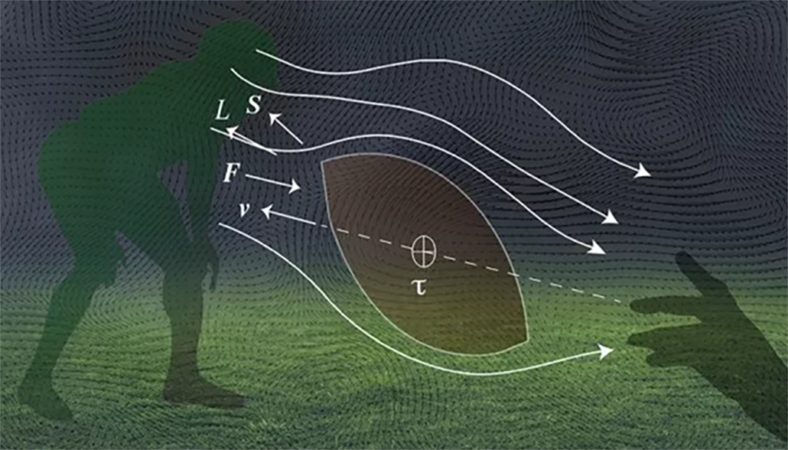Researchers reveal the secret to the perfect football throw
The path taken by the ball’s nose is not what scientists had expected

Scientists use math and physics to figure out why the tip of a spiraling football follows the ball’s path.
jackscoldsweat/E+/Getty Images Plus
A perfectly thrown spiral pass enthralls football fans — and physicists. Just ask Timothy Gay. By day, he works on electron physics at the University of Nebraska in Lincoln. In his spare time, he has been puzzling over a nearly 20-year-old paradox: Why does the nose of the ball turn over and follow the football’s path as it arcs? Gay is part of a trio of researchers that can now answer this.
The group shared its findings in the September American Journal of Physics.
Co-author William Moss is a physicist at Lawrence Livermore National Laboratory in Livermore, Calif. Think of a spinning football as a spinning top or gyroscope, he says. A gyroscope is often a wheel or disk spinning rapidly about an axis that is not fixed; its axis is free to change direction. “What is cool about gyroscopes,” he says, “is that once they start spinning, they want to keep their spin axis in the same direction.”
An American football has a spin axis, too. It’s the imaginary line that goes longways through the football. It’s also the imaginary line around which the ball spins. As a football leaves a quarterback’s hand, the ball’s spin axis points upward. By the time the receiver catches the ball, that spin axis points now down. Basically, the spin axis has followed the trajectory, or path, of the football itself.

Gay and his colleagues used a computer program to solve the equations that were important to understanding this. The calculations showed that the ball really does dive, nose first. What the researchers sought was a way to explain what the math showed in a simple manner. “In our paper, we show that gravity, wind force and gyroscopics conspire to make this happen,” says Moss. By gyroscopics, he refers to the way a gyroscope moves, especially its tendency to maintain its spin axis.
That gyroscopic effect is also what makes it possible for a top to remain standing as it spins. Try to push the spin axis away from you with a finger and the top will instead lean to the left or right. The axis moves in a direction at right angles to the push. Then the top’s spin axis begins to wobble, or “precess.” As the spin axis wobbles, it traces a cone shape around the original axis.
The same effect is at play in a football pass, the scientists now report.
What does a perfect pass look like?
Gay says a football throw is perfect when the ball’s direction of motion and its axis of spin coincide. Usually that will mean that the tip of the ball is tilted upward.
Imagine you are seated in the stands and a ball is thrown from the left. Even as it ascends, the direction of the ball’s motion falls lower due to gravity. Meanwhile, its spin axis remains stable.
This opens what Gay calls an “angle of attack.” Air rushing past the front of the ball is trying to make it tumble. Just like a finger pushing on a top, that air exerts a force on the spin axis of the ball. The ball now responds as the top would. Instead of tumbling, it begins to precess around the trajectory of the ball. It’s spin traces that cone shape.
For Gay, the next step is to try to figure out if there are ways to increase how far a well-thrown ball can travel. What he learns might offer quarterbacks some useful tips.
“What I learned from this paper is that if we played football in an airless environment, the game’s going to look very different,” says Ainissa Ramirez. She’s a materials scientist and engineer. She also co-wrote Newton’s Football, a book on the science behind the sport.
When thrown, a football’s arc typically makes a parabola. In math, parabolas are special U-shaped curves that form by slicing through a cone-shape. If it wasn’t for the air, Ramirez says, the football would still trace a parabola because of gravity. However, it’s nose would be pointing up the whole way, instead of turning down.
One limit of the new paper, she says, it that it only presents a theory. It would be interesting if we could put that theory to the test in a giant vacuum chamber, she says.
“Football is a great connector,” she adds. “Uncovering the science behind it is a way to bridge two different worlds — the so-called geeks and jocks.”







